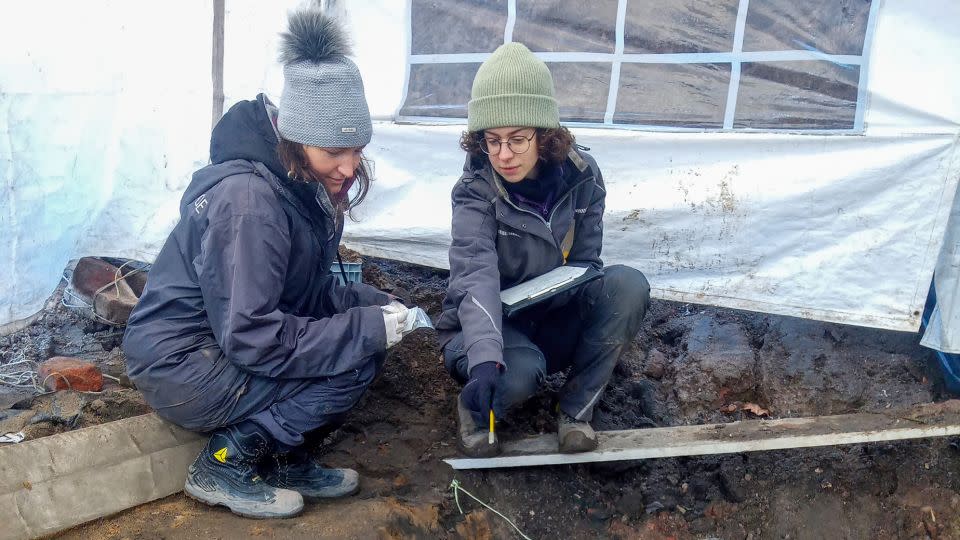Mass grave with 1,000 skeletons found in Germany
Sign up for CNN’s Wonder Theory science newsletter. Explore the universe with news on fascinating discoveries, scientific advancements and more.
Archaeologists say they have discovered what may be the largest mass grave ever excavated in Europe at a site in southern Germany.
Roughly 1,000 skeletons of plague victims have so far been found in mass graves in the center of the city of Nuremberg, which experts believe may contain a total of more than 1,500 people, according to a press release published Tuesday.
The remains were discovered during an archaeological survey prior to the construction of new residential buildings in the city.
Melanie Langbein, from Nuremberg’s department for heritage conservation, told CNN that eight plague pits were identified, each containing several hundred bodies.

“Those people were not interred in a regular cemetery although we have designated plague cemeteries in Nuremberg,” said Langbein.
“This means a large number of dead people who needed to be buried in a short time frame without regard to Christian burial practices,” she said.
Because of this, an epidemic such as the plague is “more than likely” the explanation for the mass graves, according to Langbein.
Nuremberg suffered plague outbreaks roughly every 10 years from the 14th century onward, she said, making it a challenge to date the remains.

Archaeologists used radiocarbon dating to date one mass grave to between the late 1400s and early 1600s, and found shards of pottery and coins dating from the later end of that range at the site.
They also discovered a note from 1634 detailing a plague outbreak that killed more than 15,000 people in 1632-1633, which says almost 2,000 people were buried near St. Sebastian Spital, the site of the current excavation, Langbein said.
This evidence led the team to conclude that the older group of remains probably dates from the 1632-1633 epidemic.

Julian Decker, whose company In Terra Veritas is carrying out the excavation, told CNN he was surprised by the discovery.
“There was no indication to assume that there were burials on this field,” he said, adding that when the first remains were discovered he thought they could have been from World War II bombing raids.
Decker now believes the site may contain more than 1,500 bodies.
“I personally expect the number to be at 2,000 or even above, making it the biggest mass grave in Europe,” he said.
Langbein told CNN that the 1632-1633 epidemic was worse than those that came before because of the impact of the Thirty Years War, a series of conflicts fought by various European nations from 1618 to 1648.
“Nuremberg was surrounded by different troops and the population was living in quite dire circumstances,” she said.
The graves contain a representative sample of society at the time, the researchers say, allowing them to examine the characteristics of the population.
“We can with statistical means explore the size and demographic of the city with the same tools that a modern census team would with a recent population,” said Decker, including the percentage of children and adults, women and men and general health.
“Technically we could find out what percentage were left handed,” he added.
Next up is work to complete the excavation, as well as cleaning and analyzing bone material, Langbein told CNN.
There will also be collaborations with institutions interested in certain aspects of the findings, including analyzing the plague genome and investigating parasite eggs in the soil, she added.
“We’re also planning an exhibition, but this will take some time, so fall 2025 would be the earliest we could be ready,” said Langbein.
For more CNN news and newsletters create an account at CNN.com



